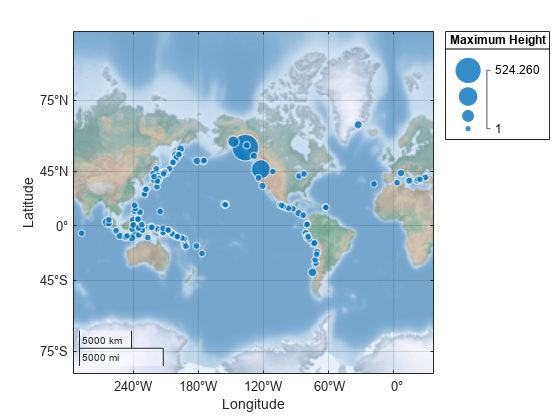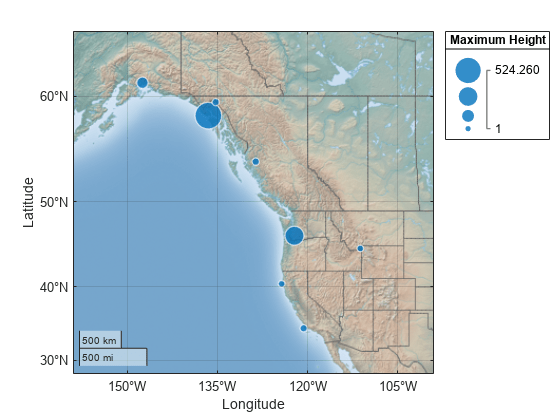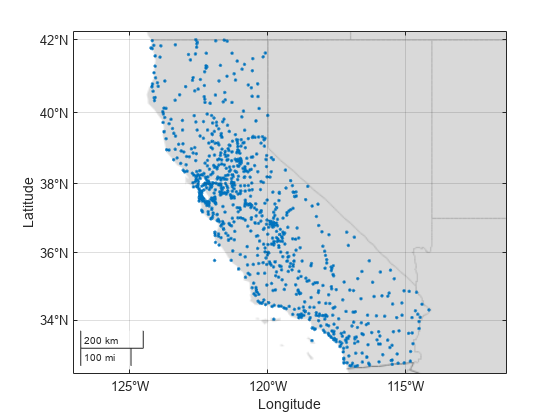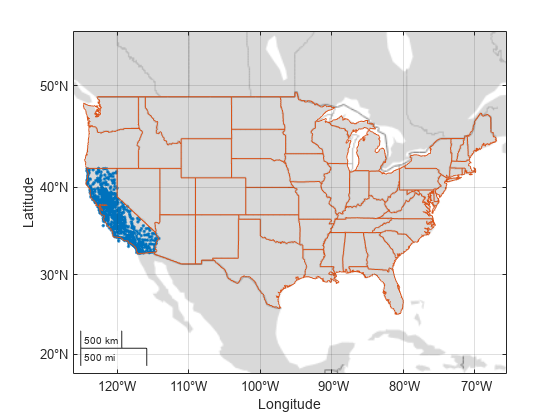geolimits
设置或查询地理范围
语法
说明
指定范围
geolimits( 指定自动或手动范围选择。您可以将 limitmode)limitmode 指定为以下值之一:
"auto"- 启用自动范围选择。MATLAB® 根据您的数据范围选择范围。如果您多次在坐标区或图中绘制,范围会更新以涵盖所有数据。"manual"- 尽可能保留当前范围。
您可以不带括号指定 limitmode 参量。例如,geolimits auto 启用自动范围选择。
查询范围
指定目标坐标区或图
[___] = geolimits( 使用 ax,___)ax 指定的坐标区或图。
示例
输入参数
输出参量
提示
对于地图坐标区,该函数可以包括由 latlim 和 lonlim 定义的四边形周围的区域。有关仅显示四边形内数据的信息,请参阅Create Map of Quadrangle Using Cartographic Map Layout (Mapping Toolbox)。
版本历史记录
在 R2017b 中推出
1 Alignment of boundaries and region labels are a presentation of the feature provided by the data vendors and do not imply endorsement by MathWorks®.





